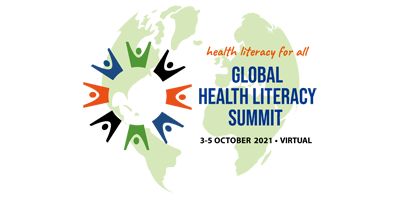Abstract Preview
Abstract
|
Title Individuals’ proficiency in active participation in health care communication – results from the HLS19 -survey |
|
Type Oral Presentation Only |
|
Theme Global Health Literacy Summit 2021 |
|
Topic Health literacy and clinical healthcare settings (incl primary care) |
Authors
|
Main Author Hanne Søberg Finbråten1 |
|
Presenting Author Hanne Søberg Finbråten1 |
|
Co-Author Peter Nowak2 Éva Bíró3 Henrik Bøggild4 Rana Charafeddine5 Julien Mancini6 HLS19-Com Working Group |
Authors' Institution
|
Department / Institution / Country Health and Nursing Sciences / Inland Norway University of Applied Sciences / Norway (Norge)1 Austrian Public Health Institute / Austrian Public Health Institute / Austria (Österreich)2 Department of Public Health and Epidemiology / University of Debrecen / Hungary (Magyarország)3 Public Health and Epidemiology / Aalborg University / Denmark (Danmark)4 Department Epidemiology and public health / Sciensano / Belgium5 Department of Public Health, SESSTIM, BioSTIC / Aix-Marseille University, APHM, Inserm, IRD / France6 |
|
Abstract Content (abstracts should be written in Size 11 font, Arial font style) Introduction Health care communication and patient participation in health care have been recognized as a decisive part of health literacy. Communicative health literacy is the skill that enables individuals to seek information and actively participate in communication with health care providers, derive meaning from the obtained information and apply the information to manage health. The focus on communication has become increasingly important because of the change in the patients’ role and the demand for more patient participation and shared decision-making. Sufficient communication skills are a critical determinant of successful disease management and health outcomes. Objective To describe how communicative health literacy in health care is distributed in general populations. Communication in health care in this research relies on face-to-face interaction in co-presence with doctors. Methods In total, 17825 adults across eight European countries responded to the 6-item version of the HLS19-instrument for measuring health literacy relating to communication in health care services in the general population (HLS19-COM-Q6). Data were collected using either web, telephone, or personal interviews. The HLS19-COM-Q6 displayed acceptable psychometric properties and reliability indexes (Cronbach’s alpha: 0.885; Person separation index: 0.809). Results Preliminary results indicate that on average one sixth of the individuals find it difficult to communicate with their doctors (ranging from 9 to 27% between the countries). The HL-COM-Q6 scores were in most countries moderately correlated with general health literacy score (r ranging from 0.27 to 0.52 between the countries). To get enough time in the consultation with the doctor and to express personal views and preferences to the doctor were experienced as the most difficult items. The youngest group (aged 18–25) and those with a lower socio-economic status were found to have lower proficiency in communicative health literacy. Discussion and Conclusion Proficiency in communicative health literacy follows the social gradient and interventions are necessary to reduce health inequalities. Doctors should be aware that individuals have different ability to participate actively in the communication and should adapt the communication accordingly. Differentiating time in the consultation for groups with low communicative health literacy might be a way to alleviate this. |
Requires Audio or Video system for Presentation?: No
